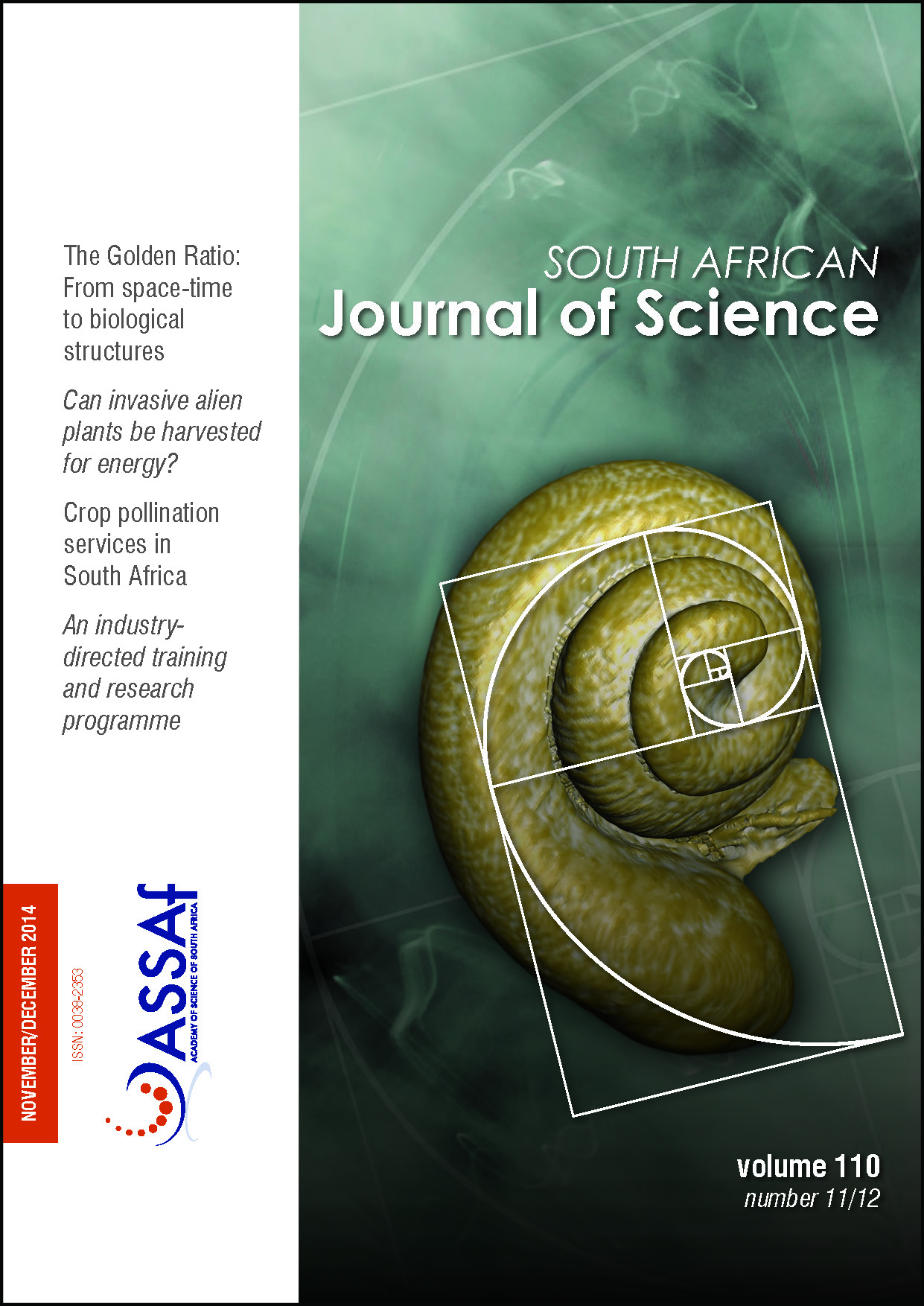Pollination ecosystem services in South African agricultural systems
DOI:
https://doi.org/10.1590/sajs.2014/20140078Keywords:
pollination services, honeybees, supporting ecosystem services, deciduous fruit, landscape level floral resourcesAbstract
Insect pollinators, both managed and wild, have become a focus of global scientific, political and media attention because of their apparent decline and the perceived impact of this decline on crop production. Crop pollination by insects is an essential ecosystem service that increases the yield and quality of approximately 35% of crops worldwide. Pollinator declines are a consequence of multiple environmental pressures, e.g. habitat transformation and fragmentation, loss of floral resources, pesticides, pests and diseases, and climate change. Similar environmental pressures are faced in South Africa where there is a high demand for pollination services. In this paper, we synthesise data on the importance of different pollinators as a basis for services to South African crops and on the status of managed honeybees. We also focus on insect pollination services for the Western Cape deciduous fruit industry, which is worth ZAR9800 million per year and is heavily reliant on pollination services from managed honeybees. We discuss landscape and regional level floral resources needed to maintain sufficient numbers of managed honeybee colonies. In summary, the available literature shows a lack of data on diversity and abundance of crop pollinators, and a lack of long-term data to assess declines. We highlight key areas that require research in South Africa and emphasise the critical role of floral resource availability at the landscape and regional scale to sustain pollinators. We conclude that understanding the dynamics of how floral resources are used will help inform how landscapes could be better managed in order to provide long-term sustainable pollination services.
Published
Issue
Section
License

This work is licensed under a Creative Commons Attribution 4.0 International License.

All articles are published under a Creative Commons Attribution 4.0 International Licence
Copyright is retained by the authors. Readers are welcome to reproduce, share and adapt the content without permission provided the source is attributed.
Disclaimer: The publisher and editors accept no responsibility for statements made by the authors
How to Cite
- Abstract 1148
- PDF 1825
- EPUB 232
- XML 305













.png)